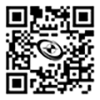What is threading?
A screw or bolt thread is a continuous helical lever of specified cross-section produced on the external surface. There are two ways to produce a thread on a screw or bolt. The first method is thread cutting. This method involves removing the material from a bolt blank using a cutting die or lathe to produce the thread. This technique interrupts the grain flow of the material. Thread cutting requires the least amount of tooling costs, generally only used for large diameter or non-standard externally threaded fasteners. It is also the most commonly used method for internal threads. Thread rolling involves rolling the reduced diameter portion of the shank between two reciprocating serrated dies. The advantages of thread rolling include a more accurate and uniform thread dimension, smoother thread surface, and greater tensile strength.U.S. Standard Thread
There are three thread series in the Unified Screw Thread System that are important for fasteners: UNC (course), UNF (fine), and 8-UN (8 thread.) Each thread series has unique advantages and uses for different applications. The UNF threads series bolts are stronger in tension since they have larger stress areas. Their larger diameters develop higher torsional (twisting) and transverse (cross) strength. They can tap better in thin-walled members. Tapping refers to the process of cutting a thread on the inside surface of a hole. With smaller helix angles, the UNF thread series permits closer adjustment accuracy. The UNC thread series has stripping strengths that are greater for the same length of engagement, which provides improved fatigue resistance, making the bolt less likely to cross thread. Cross threading occurs when a nut is screwed onto a bolt at the wrong angle. The sharp teeth of one of the piece’s thread will the cut the thread of the other piece, damaging it. Cross threading can happen when the nut and bolt are incompatible, are made from different materials, or are screwed at the wrong angle. The UNC thread series provides quicker assembly and disassembly and taps better in brittle materials.Thread terminology
Axis – an imaginary line running longitudinally through the center of the screwCrest – the top most surface of the thread
Root – the bottom of the groove between the two flanks
Flank – straight edges which connect the crest and root of the thread
Depth of thread – distance between the crest and root of the thread
Major diameter – an imaginary largest diameter of the thread which would touch the crests of an internal or external thread
Minor diameter – an imaginary smallest diameter of the thread which would touch the roots of an external thread



